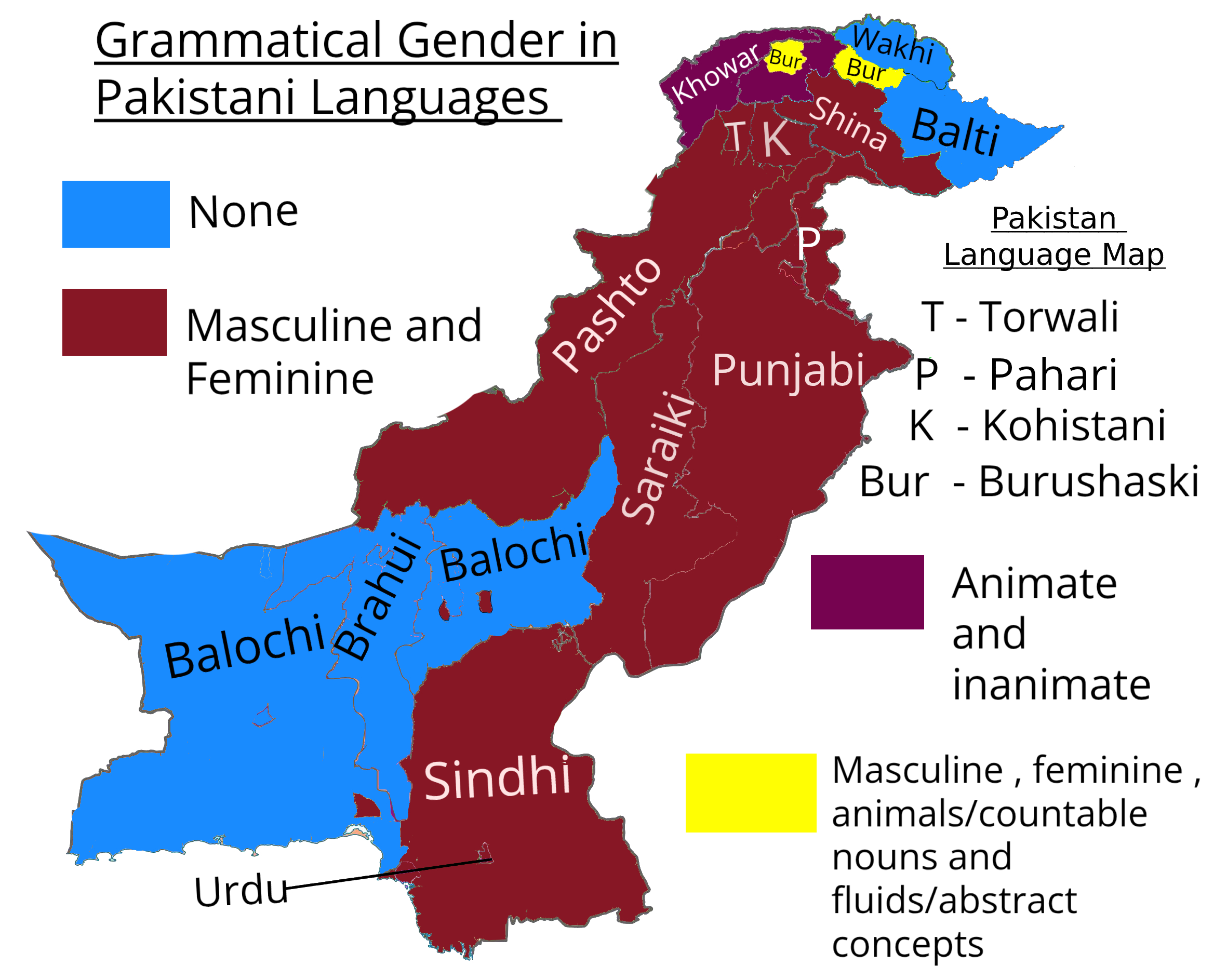Pakistan Grammatical Gender Map


Alex Cartwright
Senior Cartographer & GIS Specialist
Alex Cartwright is a renowned cartographer and geographic information systems specialist with over 15 years of experience in spatial analysis and data...
Geographic Analysis
What This Map Shows
The "Pakistan Grammatical Gender Map" visually represents the distribution of grammatical gender across various regions in Pakistan. This map highlights how different areas of the country utilize gendered nouns, adjectives, and verb forms, reflecting the linguistic diversity of Pakistan's many languages. Understanding grammatical gender is crucial for grasping the complexities of language structure, particularly in a multilingual society like Pakistan, where languages such as Urdu, Punjabi, Sindhi, Pashto, and Balochi coexist.
Deep Dive into Grammatical Gender in Pakistan
Grammatical gender is a linguistic classification that categorizes nouns, pronouns, and adjectives into classes based on characteristics such as sex. In many languages, including those spoken in Pakistan, grammatical gender influences sentence structure and meaning. Interestingly, in Urdu and Punjabi, for instance, nouns are often classified as masculine or feminine, impacting verb conjugations and adjective agreements. This classification can be an intriguing topic for linguists and language learners alike.
In Urdu, which is the national language of Pakistan and serves as a lingua franca, masculine nouns typically end in a consonant, while feminine nouns often end in the vowel 'a'. For example, the word for 'boy' (لڑکا, larka) is masculine, whereas 'girl' (لڑکی, larki) is feminine. This distinction is not merely academic; it plays a significant role in everyday communication and cultural expression.
Interestingly, other languages in Pakistan, such as Sindhi, also feature a similar gender classification system. Sindhi has a rich history and is spoken primarily in the Sindh province, where gender distinctions in nouns and adjectives are prevalent. The gendered nature of these languages can sometimes lead to confusion for learners, especially those coming from languages that do not utilize gender.
Moreover, gendered language can reflect and reinforce cultural norms. In traditional contexts, masculine forms may dominate discourse, impacting perceptions of gender roles and societal expectations. This intersection of language, culture, and identity is a vibrant area of study in sociolinguistics.
Regional Analysis
When examining the map, we notice noticeable variations in grammatical gender usage across different regions of Pakistan. For instance, in Punjab, where Punjabi is the predominant language, grammatical gender is deeply embedded in everyday speech. The region's rich folklore and poetry often exemplify the use of gendered language, showcasing how cultural narratives are intertwined with linguistic structure.
In contrast, in regions such as Balochistan, where Balochi is spoken, the gender system may differ significantly from that in Punjab. Balochi, which has its own grammatical rules, presents a unique perspective on gender classification. Interestingly, this linguistic diversity highlights not only the complexities of language but also the rich cultural tapestry of Pakistan.
Furthermore, in urban centers like Karachi, a melting pot of languages and cultures, the influence of Urdu predominates, often leading to a blending of grammatical structures from various languages. This urban linguistic environment presents a fascinating case study for how language evolves in multicultural settings.
Significance and Impact
Understanding grammatical gender is not just an academic exercise; it has real-world implications for communication, education, and societal dynamics. For language learners, mastering grammatical gender is essential for effective communication and comprehension. Moreover, in a country like Pakistan, where multiple languages coexist, appreciating these nuances fosters better cultural understanding and respect.
As globalization continues to influence language use, the dynamics of grammatical gender may evolve. For example, younger generations may adopt more gender-neutral language forms, reflecting broader societal changes in gender perception and equality. This shift could significantly impact how languages are taught and learned, as well as how they are perceived in the context of cultural identity.
In conclusion, the "Pakistan Grammatical Gender Map" serves as a powerful tool to visualize and understand the complexities of linguistic gender across different regions. It invites us to delve deeper into the relationship between language, culture, and identity in Pakistan, highlighting the vibrant tapestry of its linguistic landscape. By engaging with this map, we gain valuable insights into how language shapes our understanding of the world around us.
Visualization Details
- Published
- October 2, 2025
- Views
- 44
Comments
Loading comments...